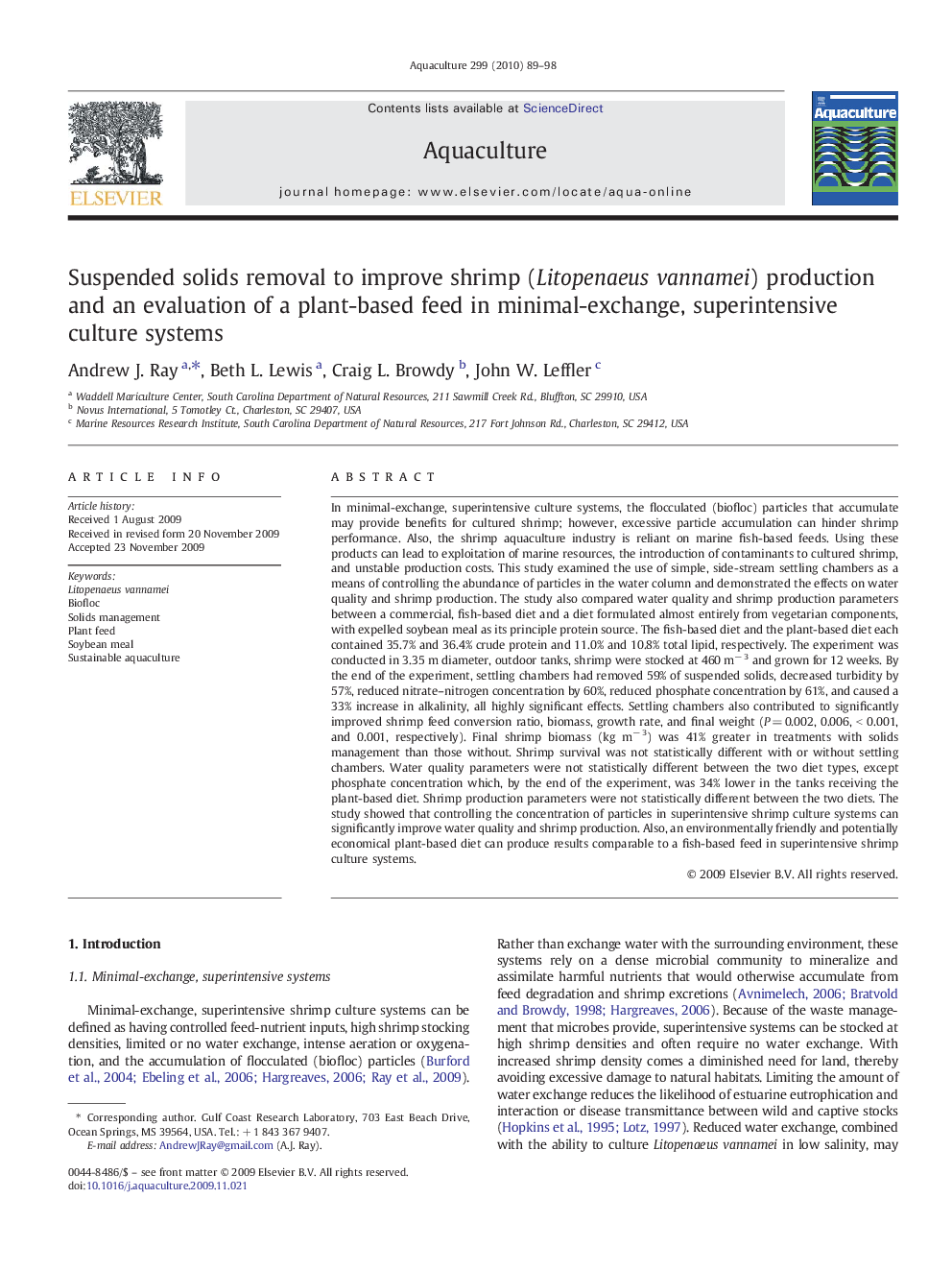| Article ID | Journal | Published Year | Pages | File Type |
|---|---|---|---|---|
| 2423776 | Aquaculture | 2010 | 10 Pages |
In minimal-exchange, superintensive culture systems, the flocculated (biofloc) particles that accumulate may provide benefits for cultured shrimp; however, excessive particle accumulation can hinder shrimp performance. Also, the shrimp aquaculture industry is reliant on marine fish-based feeds. Using these products can lead to exploitation of marine resources, the introduction of contaminants to cultured shrimp, and unstable production costs. This study examined the use of simple, side-stream settling chambers as a means of controlling the abundance of particles in the water column and demonstrated the effects on water quality and shrimp production. The study also compared water quality and shrimp production parameters between a commercial, fish-based diet and a diet formulated almost entirely from vegetarian components, with expelled soybean meal as its principle protein source. The fish-based diet and the plant-based diet each contained 35.7% and 36.4% crude protein and 11.0% and 10.8% total lipid, respectively. The experiment was conducted in 3.35 m diameter, outdoor tanks, shrimp were stocked at 460 m− 3 and grown for 12 weeks. By the end of the experiment, settling chambers had removed 59% of suspended solids, decreased turbidity by 57%, reduced nitrate–nitrogen concentration by 60%, reduced phosphate concentration by 61%, and caused a 33% increase in alkalinity, all highly significant effects. Settling chambers also contributed to significantly improved shrimp feed conversion ratio, biomass, growth rate, and final weight (P = 0.002, 0.006, < 0.001, and 0.001, respectively). Final shrimp biomass (kg m− 3) was 41% greater in treatments with solids management than those without. Shrimp survival was not statistically different with or without settling chambers. Water quality parameters were not statistically different between the two diet types, except phosphate concentration which, by the end of the experiment, was 34% lower in the tanks receiving the plant-based diet. Shrimp production parameters were not statistically different between the two diets. The study showed that controlling the concentration of particles in superintensive shrimp culture systems can significantly improve water quality and shrimp production. Also, an environmentally friendly and potentially economical plant-based diet can produce results comparable to a fish-based feed in superintensive shrimp culture systems.
